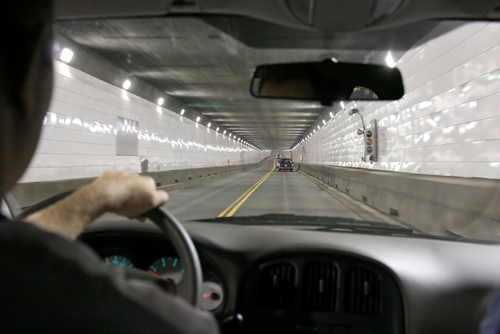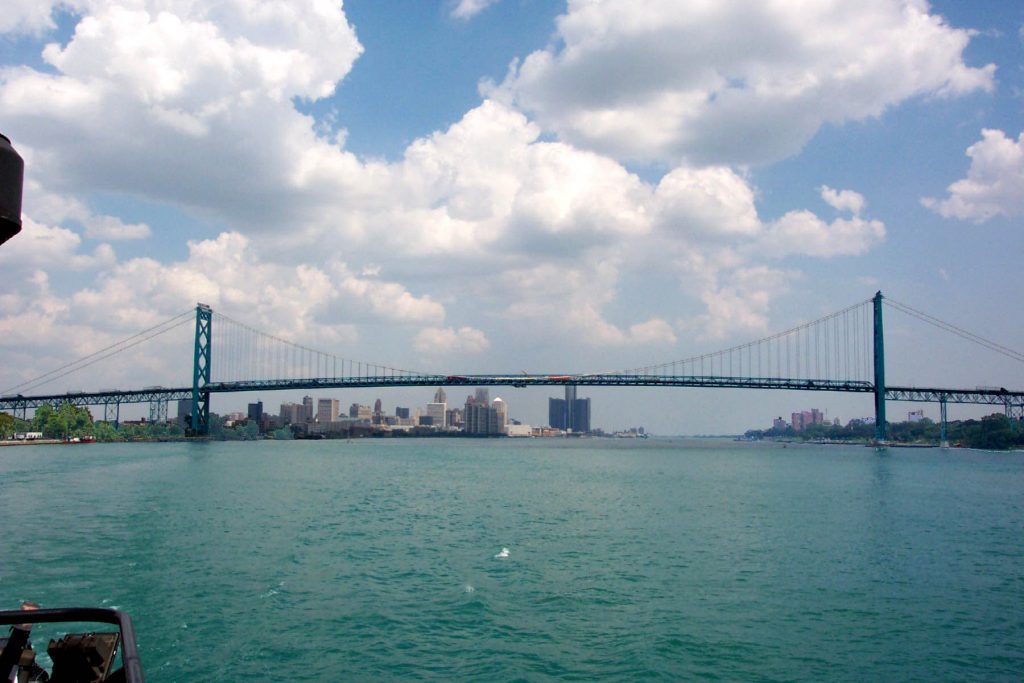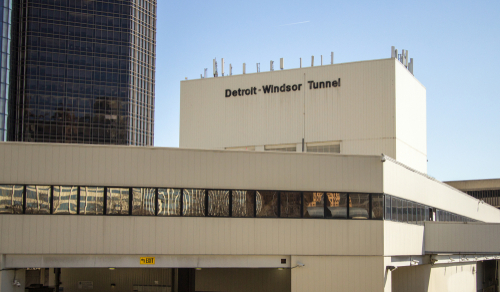The corner of Wyandotte Avenue West and Patricia Road in the west end of Windsor, Ontario, is an odd nexus, a literal and figurative intersection between residence, commerce, international exchange, and industry.

A 7-Eleven near the intersection serves a motley crew of patrons at all hours, not the least of which is a global assortment of university students. On the way out, I hold the door for a young woman wearing a hijab and cross in front of a Chinese couple in a silver Toyota in the parking lot.
But I’m not here for late-night fried food. I’ve already enjoyed my weekly – likely beyond weekly – calorie quota during a Monday night trivia session at the ancient Victoria Tavern on Chilver Road in Windsor’s Walkerville neighborhood, a few kilometers to the east across town.
I’m actually waiting for a cab to take me home across the Ambassador Bridge to Detroit.
“Hi, Nash,” a text message flashes on my cracked phone screen. “Your driver is on the way. You can now track your Vets Cab number 24 by clicking here …”
“Nash,” huh? That’s a new one.
Why am I taking a cab across the border? I’ve been working on a stakeholder engagement survey for TheHUB that delves into the regional transit question currently dogging metro Detroit.
 I want to understand exactly why we have such an underdeveloped transit infrastructure. I want to understand why it’s so hard for us to get things done in transportation as a region.
I want to understand exactly why we have such an underdeveloped transit infrastructure. I want to understand why it’s so hard for us to get things done in transportation as a region.
I am not originally from these parts and my understanding of “normal” in my hometown an hour outside Philadelphia was taking a bus to the train station and having my pick of ten Amtrak routes in either direction per day.
Not so in Detroit, where a single Amtrak crawls the 40 miles to Ann Arbor in just under an hour. “It’s the Motor City,” goes the common refrain. “What do you expect?”
Two adjacent motor cities, Detroit and Windsor, embrace a heavily automotive paradigm. But while Windsor boasts some excellent attractions – cultural diversity, a vibrant, increasingly diversified economy, and a world-class food scene, to boot – it lags in progressive thinking about how to move into the next generation of mobility.
Detroit debates just how aggressively it should pursue its new complete streets transit initiative, as debates rage in Windsor over how to spend limited city funds to create more parking in the dense downtown area. Parking is treated as though it’s the make-or-break determinant of a vibrant economy (surprise ending – it’s not).
Though Windsor is smaller than Detroit, the two cities are twins in an important economic symbiosis surrounding the historically automotive sector. Jobs in one city are necessarily dependent upon the other, and this goes well beyond the city limits.
For example, the Chrysler 300 sedan is made in Brampton, Ontario.
When Detroit’s auto sector takes a hit, so, too, does Windsor and the rest of Ontario. Exchange rates affect the economic viability of automotive trade through steel, machine tools, and parts.
For the most part, this international connection works for tourism. In addition to Caesars Windsor and the city itself, Essex County boasts a wealth of natural areas, wineries, and charming small towns.

The connection also works for healthcare with Canadian nurses working in Detroit hospitals, and for workforce with Canadian automotive engineers employed in metro Detroit.
If you drew boundaries into Ontario that roughly mirror the Combined Statistical Area of Flint, Ann Arbor, and Metro Detroit, Canadian residents would account for about 13 percent of this new, international district. Imagine disconnecting 13 out of 100 people from jobs, shopping and tourism in the broader area, due to lack of convenient, affordable transit.
When evening descends on downtown Windsor’s Ouellette Ave., it brings a nefarious condition a Canadian friend once called “hoochie night time,” and the strip is populated with young Michiganders eager to enjoy a Long Island Iced Tea for $3 –at those favo(u)rable exchange rates.
But this mentality betrays an unfortunate, limited cultural connectivity between two cities that share centuries of history.
I’ve long been a hype man for Windsor and its peculiar, gritty charm and diversity. I’ve been jokingly called the Flavor Flav to Windsor Mayor Drew Dilkens’ Chuck D, though I have never met the man.

So, as a regular international man of mystery who has been carless since December (shout-out here to Progressive Insurance for paying zero dollars and to the red-light-runner who totaled my Toyota and drove off into the night), I have to get creative about how to get around in a border town.
Taxi rates are exorbitant – there’s a $20 surcharge on any trip across the bridge – and kilometers rack up on the meter way faster than miles). And since there is no bike connectivity between the two cities, except on the tunnel bus, which can carry up to two bikes on a front rack, I’ve begun devoting myself to exploring solutions.
One man, the hero we need, though perhaps not the hero we deserve, did try riding his bike through the tunnel once – to get to a Steely Dan concert, of all places.
In future installments of this series, I’ll further explore and suggest better options and more realistic outcomes for the betterment of the Detroit-Windsor region.
Editor’s Note: This commentary is the first in a series about transit and mobility in Southeast Michigan.


